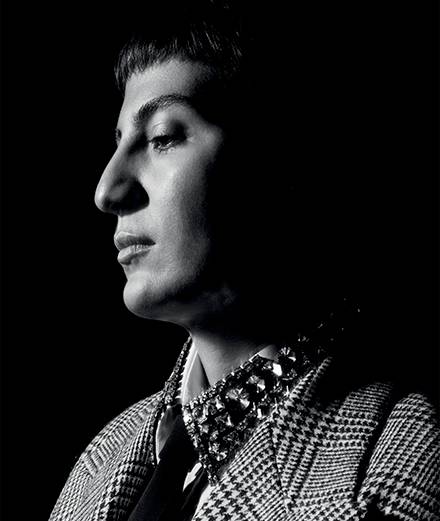Numéro: What led you into furniture design?
Virgil Abloh: Fashion is a disposable creation. The process is completely different to that of art which is about projecting yourself in a durable logic by developing a way of thinking that’s much more developed. I studied architecture and I believe that my work comes from this discipline. I’m not saying I conceive clothing like a building that dialogues with the body, which would be a bit ingenuous. I’m talking more about the way I’ve built my brand. I’m talking about the mental process that Off-White comes from: why does the brand exist, what notions does it question, what does it represent? It’s with these questions in mind that I conceive my clothes. The construction project also nourishes the fashion show, the website, all communications coming from my brand, its ethics. The furniture, which is supposed to outlive me, is like the natural next step in this project.
In this your first collection of furniture entitled “The Framing Collection”, we see the grill pattern and metallic meshing that also feature on your clothes. Was it important that you create bridges and generate connections between your creations?
It’s true the grill is a key theme for me, it’s inspired by the architecture of Mies Van der Rohe: the rational distribution of weight of a building, from the ground up to the roof, draws this pattern. The idea to show the structure rather than hide it, was essential for Mies Van der Rohe too. When I was studying at the Illinois Institute of Technology, the teaching was inspired by principles of the Bauhaus: the curriculum included lessons in typography, visual communications and philosophy… I really identified with this trans-disciplinary vision. The way I use graphics and typographies in my clothing collections is based on this way of thinking, I apply it to the context of contemporary branding. Off-White is a system blessed with its own structure, its own logic, which is where all the creations come from, whether it’s a t-shirt, a chair or a piece of music.
Where do you have your furniture made and where are they sold?
They’re produced in Italy. The metallic mesh and the marble parts require a constant dialogue with my producers in order to push them to renew their techniques, combining mechanised production with handmade interventions. The line is composed of two distinct parts: one part is already available to order. The other part is made up of more artistic and limited edition collector pieces which I will be unveiling in galleries around the world. This touring exhibition is planned for late 2016, early 2017.














